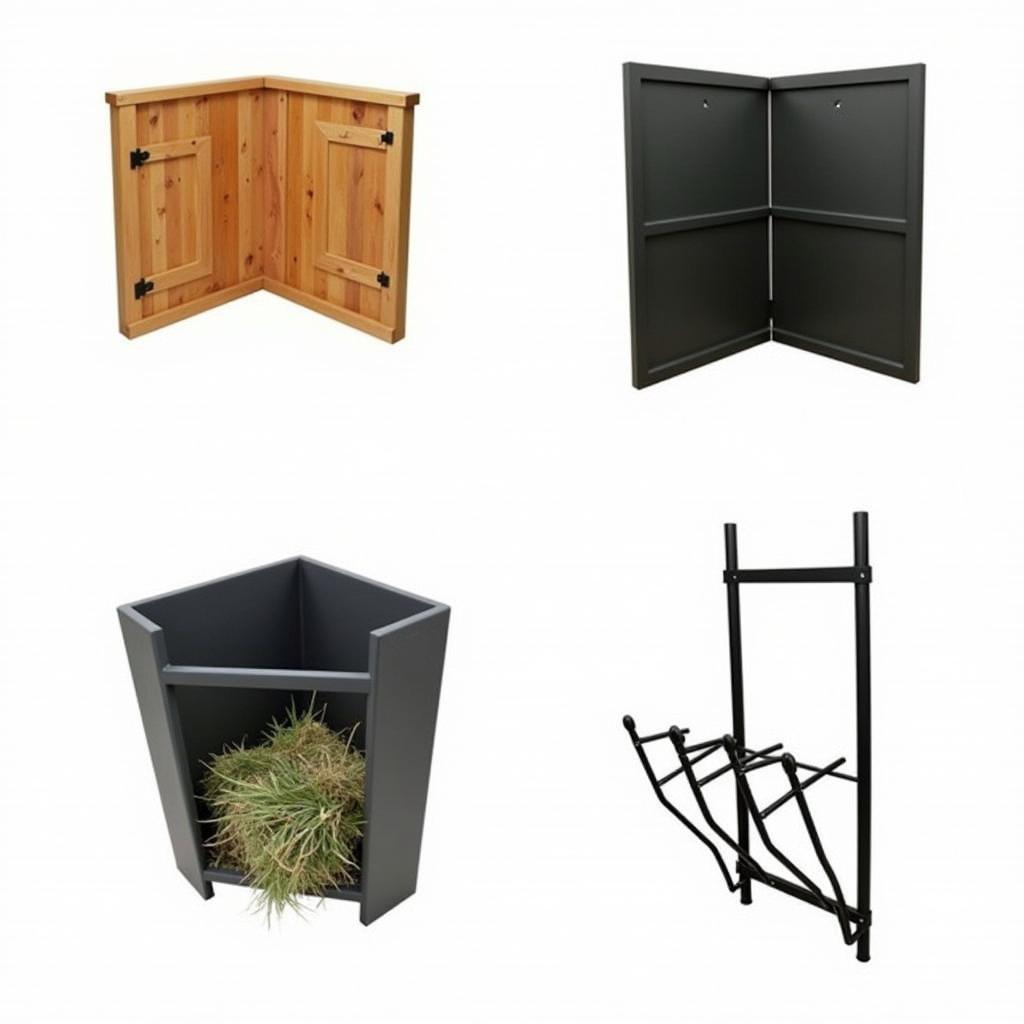A Manger Horse is more than just a feeding station; it’s a crucial element in your horse’s health and well-being. Selecting the appropriate manger involves considering factors like your horse’s size, feeding habits, and overall barn setup. This guide dives deep into the world of manger horses, providing you with the essential knowledge to make the best decision for your equine companion.
Understanding the Importance of a Manger Horse
A well-chosen manger horse minimizes feed waste, promotes proper digestion, and prevents behavioral issues stemming from frustration or competition. It also contributes to a tidy and organized barn environment. Whether you have a slow feeder horse or a more enthusiastic eater, the right manger can make all the difference. For those looking for a solution to control feeding pace, check out our selection of slow horse feeder.
Factors to Consider When Choosing a Manger Horse
Choosing a manger isn’t a one-size-fits-all approach. Several factors influence the ideal manger for your horse:
- Size and Breed: Larger horses require more spacious mangers than ponies or miniature horses.
- Feeding Habits: Horses prone to bolting their food benefit from slow-feed mangers, while those with dental issues may need elevated or specially designed options.
- Material: Mangers are available in various materials, including wood, plastic, and metal. Each has its pros and cons regarding durability, hygiene, and safety. Consider checking out our range of plastic hay feeders for horses for a durable and easy-to-clean option.
- Placement and Mounting: Wall-mounted, corner, and free-standing mangers offer different advantages depending on your barn layout and management style.
 Various manger styles to suit different needs and barn setups.
Various manger styles to suit different needs and barn setups.
Different Types of Manger Horses
From traditional wooden boxes to modern, innovative designs, the market offers a diverse range of manger horses:
- Wall-mounted Mangers: A classic choice, these mangers save space and are easy to install.
- Corner Mangers: Ideal for maximizing space in smaller stalls, corner mangers provide a dedicated feeding area.
- Free-standing Mangers: Portable and versatile, these mangers can be moved as needed and are suitable for use in pastures or paddocks.
- Slow-Feed Mangers: Designed to prolong feeding time and mimic natural grazing, slow-feed mangers promote digestive health and reduce boredom.
Maintaining Your Manger Horse
Regular cleaning is crucial for preventing the build-up of bacteria and mold, which can compromise your horse’s health. Disinfecting your manger regularly ensures a hygienic feeding environment. Just like having a dedicated manger for your horse in the stable, consider a used hay rack for horse trailer for convenient feeding during transport.
Ensuring a Safe and Comfortable Feeding Experience
Beyond choosing the right manger, consider these tips for a positive feeding experience:
- Proper Height: The manger should be positioned at a comfortable height for your horse to reach without straining.
- Regular Inspections: Check for any signs of damage or wear and tear that could pose a safety risk.
- Adequate Space: Ensure the manger is large enough to accommodate the amount of feed your horse requires.
Conclusion: The Right Manger for a Happy, Healthy Horse
Selecting the right manger horse is a vital aspect of responsible horse ownership. By considering your horse’s individual needs and understanding the different options available, you can create a comfortable and efficient feeding environment that contributes to their overall well-being.
FAQ
- What is the best material for a manger horse?
- How often should I clean my horse’s manger?
- What is the ideal height for a horse manger?
- How do I prevent my horse from bolting its food?
- What are the benefits of a slow-feed manger?
- Can I use a free-standing manger in a pasture?
- How do I choose the right size manger for my horse?
Common Scenarios and Questions:
- Scenario: My horse keeps kicking his manger. Question: What can I do to stop this behavior?
- Scenario: My horse is wasting a lot of hay. Question: Which type of manger minimizes feed waste?
- Scenario: I have limited space in my stable. Question: Which manger type is best for small spaces?
Further Reading:
Check out our other articles on horse nativity for more interesting content.
Contact Us
For further assistance, please contact us at Phone Number: 0772127271, Email: [email protected] or visit us at QGM2+WX2, Vị Trung, Vị Thuỷ, Hậu Giang, Việt Nam. We have a 24/7 customer service team.